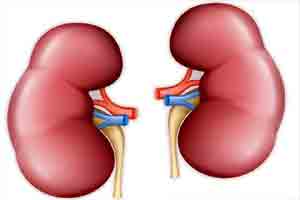- Home
- Editorial
- News
- Practice Guidelines
- Anesthesiology Guidelines
- Cancer Guidelines
- Cardiac Sciences Guidelines
- Critical Care Guidelines
- Dentistry Guidelines
- Dermatology Guidelines
- Diabetes and Endo Guidelines
- Diagnostics Guidelines
- ENT Guidelines
- Featured Practice Guidelines
- Gastroenterology Guidelines
- Geriatrics Guidelines
- Medicine Guidelines
- Nephrology Guidelines
- Neurosciences Guidelines
- Obs and Gynae Guidelines
- Ophthalmology Guidelines
- Orthopaedics Guidelines
- Paediatrics Guidelines
- Psychiatry Guidelines
- Pulmonology Guidelines
- Radiology Guidelines
- Surgery Guidelines
- Urology Guidelines
Improved analysis of kidney cancer

Every year, just over 1000 people are diagnosed with kidney cancer in Sweden. The three most common variants are clear cell, papillary and chromophobe renal cancer. Researchers compare the gene expression in tumour cells from a kidney cancer patient with cells from healthy tissue to figure out in which part of the kidney the cancer began and what went wrong in these cells. Now, a research team at Lund University in Sweden has discovered that in the Cancer Genome Atlas database, the gene expression in reference samples from normal tissue varies, depending on where in the kidney the samples happen to have been taken. The analyses can be improved by clarifying which samples correspond to the correct tissue. The study has now been published in Cell Reports.
The part of the kidney which purifies the blood and generates urine is called the nephron and functions as a kind of tubing system. Each kidney contains around a million nephrons which collectively filter 180 litres of primary urine (waste products, water and salts) every day. This results in 1.5 litres of concentrated liquid, which is excreted through urination.
"Everything is very specifically regulated and the cells have different gene expression and hence properties depending on their location in the tubing.", explains Håkan Axelson, research team leader and professor of molecular tumour biology.
When a tumour biopsy is taken from a patient and compared with healthy kidney tissue, it serves to map how the various genes are expressed so as to clarify what has gone wrong in the tumour cells. The Cancer Genome Atlas - an international database containing almost 1000 samples from kidney tumours and healthy tissue - is a tool in this process.
"But when our research team studied the samples from the database, we noticed a great range of gene expressions between normal tissue samples. It emerged that the samples in the Cancer Genome Atlas were taken at different depths in the kidney and therefore contain different types of cells, which means that their gene expressions also vary", says Håkan Axelson.
Unreliable and sometimes completely incorrect comparison
The normal reference samples thus contain various types of cells depending on where in the kidney they happen to have been taken. Since the Atlas does not state the location in the kidney the reference sample was collected, the comparison risks being unreliable and sometimes completely incorrect.
"Since the gene expression in the cells varies depending on their location, it is important that the normal samples contained in the database should also be taken from the location corresponding to that of the patient's tumour", says David Lindgren, who is the lead author of the study.
As an example, it was previously suspected that clear cell tumours occur in the first part of the nephron, but if these tumour cells are compared with a normal sample taken deeper inside the nephron, the cells will not correspond to the tumour sample. The gene expression is thereby different. Although each patient is unique, the various types of tumours have different specific genetic changes which occur as a consequence of properties in the cell in which the tumour originated.
"It is extremely important to know what characterises the cells in which the tumour occurs. Through better understanding of this interaction, we can increase our understanding of the course of the disease, which could be significant for diagnostics and, in the longer term, also for the choice of treatment", concludes Håkan Axelson.
For more details click on the link : http://dx.doi.org/10.1016/j.celrep.2017.07.043

Disclaimer: This site is primarily intended for healthcare professionals. Any content/information on this website does not replace the advice of medical and/or health professionals and should not be construed as medical/diagnostic advice/endorsement or prescription. Use of this site is subject to our terms of use, privacy policy, advertisement policy. © 2020 Minerva Medical Treatment Pvt Ltd